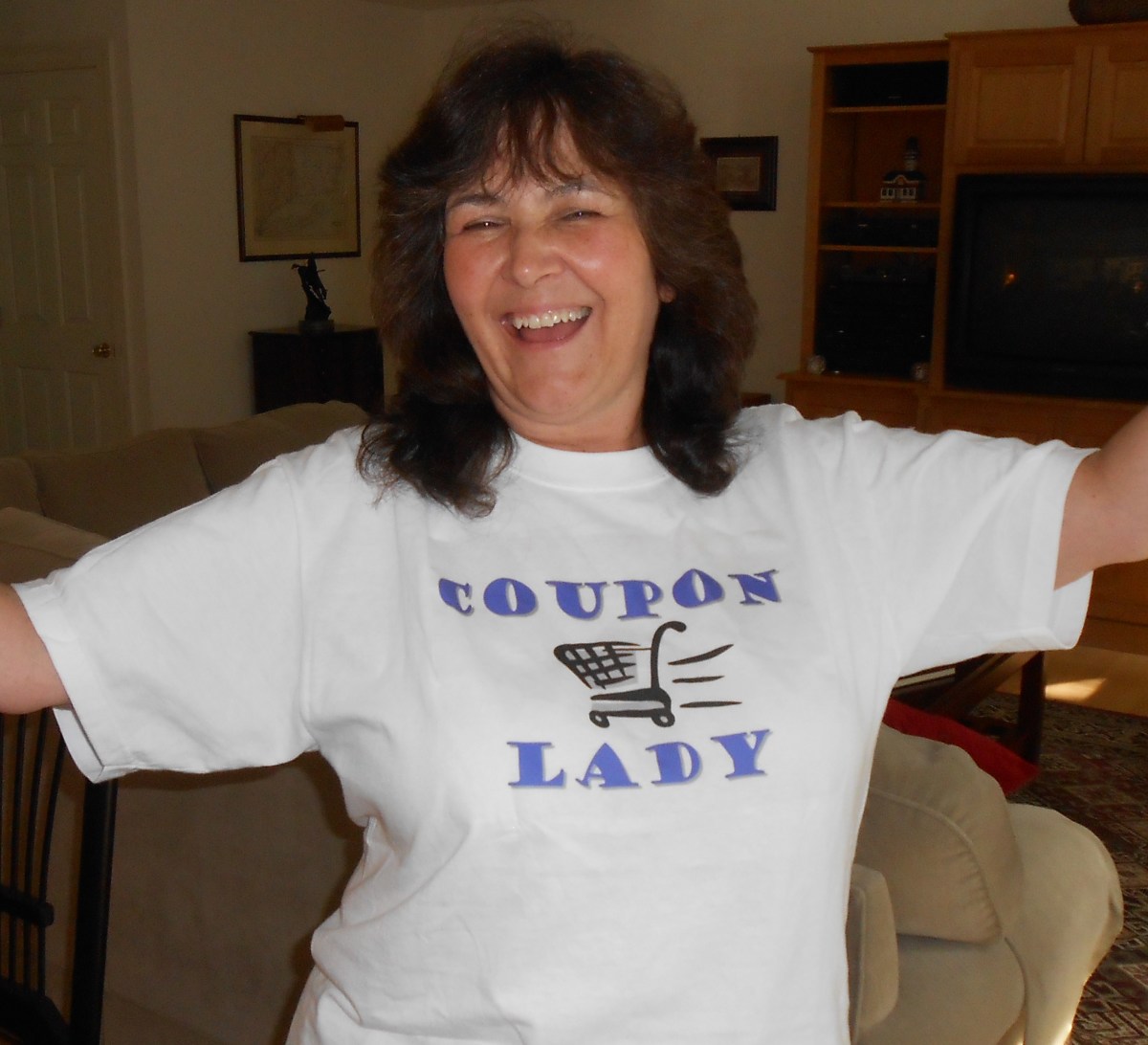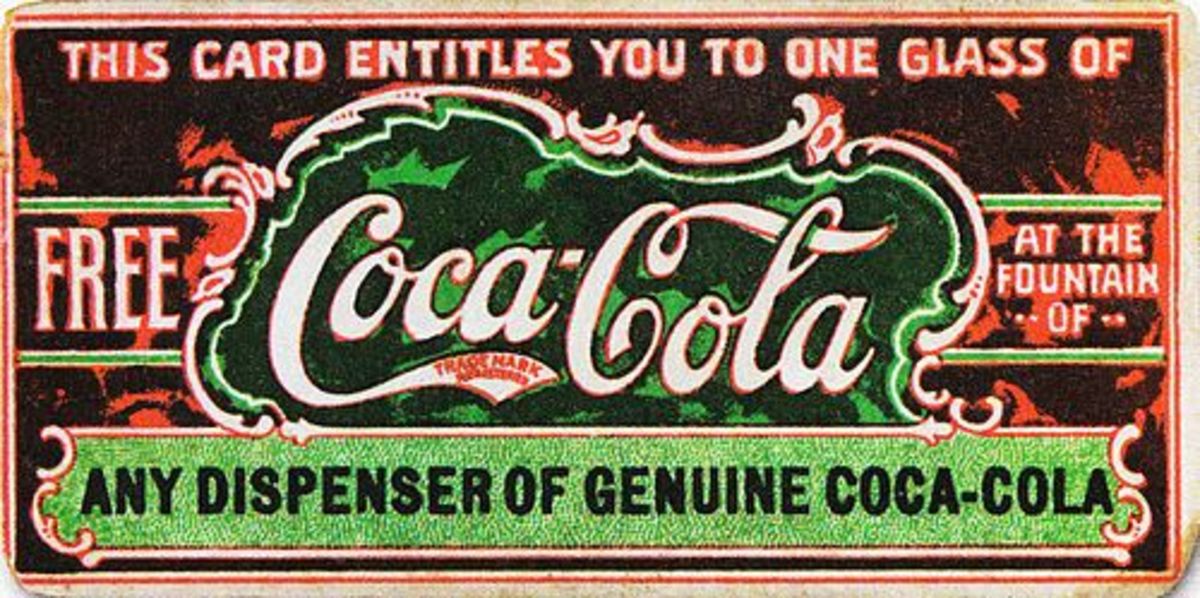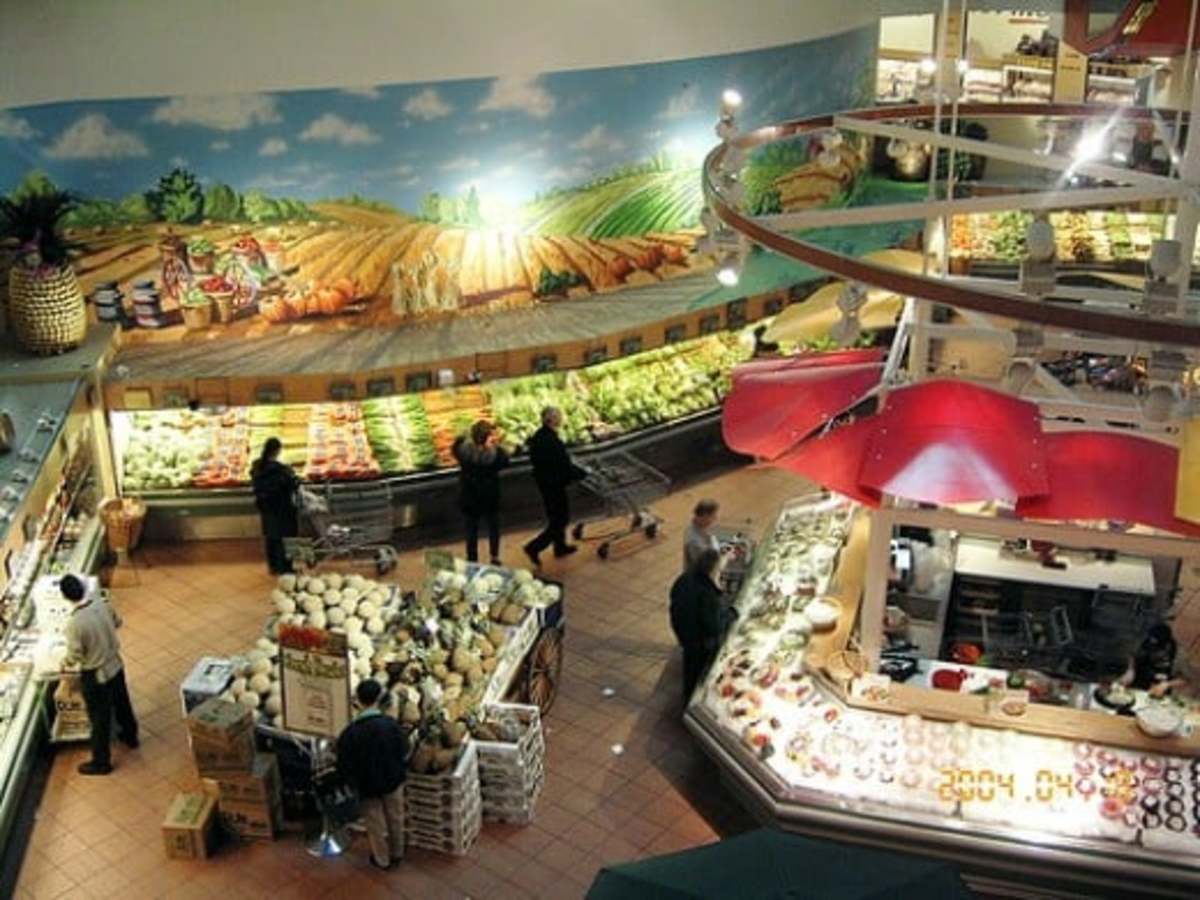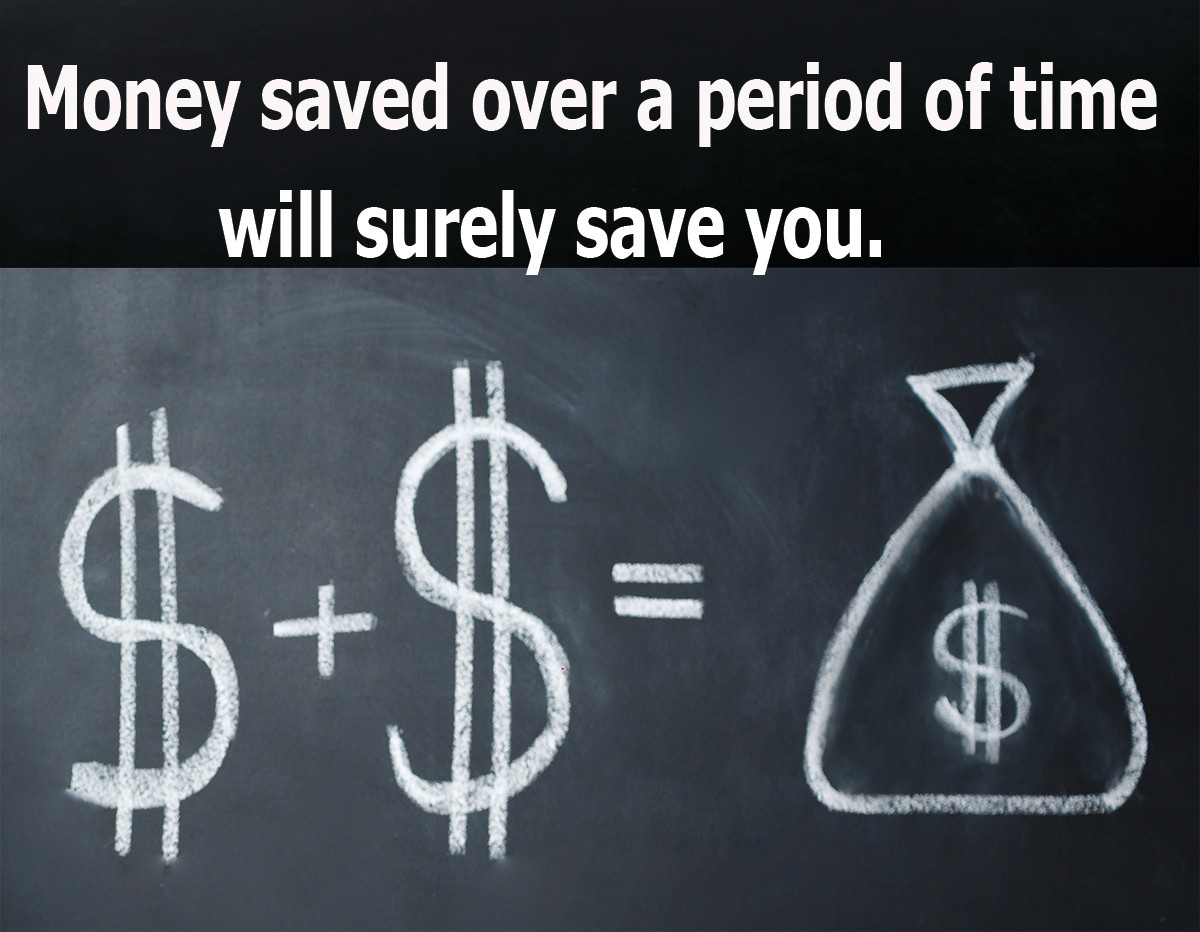- HubPages»
- Personal Finance»
- Frugal Living»
- Household Expenses
Saving Money on Groceries
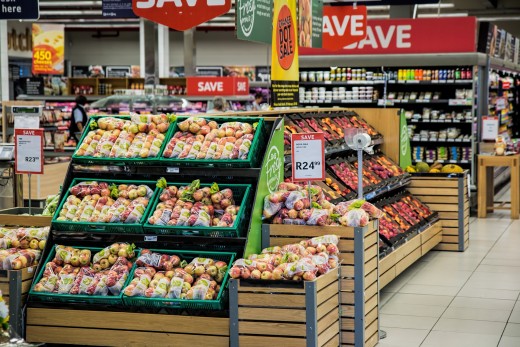
Find more ways to save at the grocery store
There are hundreds of ways to save money at the grocery store. Marketers spend millions of dollars watching how people shop to get them to spend more and more at the supermarket. Well, let's beat them at their own game and expose some of the industries best-kept secrects so you can keep more of your hard-earned cash!
Watch for the little things to save a lot
- No-Brainer savings: BOGO or Buy-One-Get-One Free. Automatic 50% savings, but only if you're going to use it. Don't get two gallons of milk if no one at home drinks it other than to lighten their coffee.
- Check the cost-per-unit price. I'll use tissues as an example. I saw the name brand on sale for 3 for $5. Each pretty box had 180 tissues, for a cost-per-unit of .92 per 100. Then I saw another brand whose regular price was $1.89 for 240 tissues. The cost-per-unit price was .78 per 100. Had I gone for the tissues that were "on sale", I would have paid more than I needed to.
- Stock up when an item you regularly use goes on sale. Why pay $2.29 a bag for chocolate chips when you can get them for $1.00? Right before Christmas, my store had chocolate chips at 10 for $10 (another pricing ploy to make you buy more). I bought 9 bags since I generally use about a bag a month (but I don't want them to think I fell for their gimmick!). Then at Valentine's day, birthdays, and other cookie-requiring days, I don't have to go out and pay that regular price of $2.29 and I have enough to last me through the summer. Right there I've saved over $11!
Places for more info and money-saving ideas
- Secrets of A Grocery Store Mystery Shopper Revealed
This is a wonderful ebook that can save you hundreds, even thousands, of dollars a year on groceries. Even comes with a Price Book template. - The Dollars Stretcher
Very informative site with lots of articles and info on saving money in every category of your budget!

Sometimes its who you know, not what you know, that counts.
- It's not always what you know that gives you the advantage in many situations. It's who you know. It's true when climbing the corporate ladder, getting your student into a private school, or being selected for the part of the dancing carrot in a high-paying commercial. It's also true when trying to save money at the grocery store.
- You don't always have to pay the price marked on the package when shopping at the supermarket. Depending on who you ask, you could save 30 to 50% or more!
- For the biggest savings, get to know the butcher. He (or she) can tell you when the meat is marked down for savings of up to 50%. Meat is generally marked down the day before, or the day of, the expiration date. The store is not allowed to sell expired meat so they either chop the price by 50% or throw it out.
- Next, get to know the baker. The bakery is also a site for perishable items that need to be sold or tossed. Find out when they move their items to the day old rack and get there first for some hot savings.
- Another person to chat with regularly is the produce manager. You can often get great deals on perfectly good produce when it starts to look less than peachy-perfect. Produce that has matured and may be ready for canning or freezing doesn't always shine, but it's ripe for savings.
- Lastly, meet the manager. Tell him that you really liked the Super Bowl theme the store had last week. Then ask when they plan to discount the boxes of Cheerios featuring the 49ers or the frozen cookies with the football-shaped centers. The manager wants to move these outdated products and improve his bottom line.
- Who you know can really help the savings add up. Add that to what you know, and you have a recipe for hundreds of dollars of grocery store savings a year.

More Great Ideas for Saving Money at The Grocery Store
- Shop at large super markets. In the case of groceries, bigger is cheaper. Volume speaks volumes and a supermarket's profits are based on volume so they can afford to give larger discounts than small grocers. Try shopping at different supermarkets to compare pricing. You'll often find that there is a less expensive one among a group.
- Grab the loss leader. These are sales, often prominently placed on the front page of store ads, that are priced at rock bottom to attract shoppers into the store. But be careful -- the rest of the items in the store may be higher than if you got them at a discount store.
- Check out the dollar stores. You can often get plastic bags, coffee, cookies and other non-perishables at lower prices here.
- Always use a list. This is the easiest way to start saving on groceries. And we've made it easier for you by providing you with printable grocery lists.
- Check the cupboards before you go shopping. So many times you put items on your grocery list because you forgot that you already have them on hand ending up with duplicates usually of items you rarely use.
- Watch the cash register. It is estimated that up to $2.5 billion per year is made in scanning errors. That's a lot of money left at the check-out counter. Supermarkets often put items on sale that don't always get to the register. Also, checkers can easily make mistakes when making entries. Just this week, I saw a 10 lb. bag of potatoes ring up at $5.99. I thought remembered them being $5.79, so after I paid, I went back and checked. Sure enough, they were marked $5.79. I went back to customer service and told them of the discrepancy. They said, "OK, so I owe you, what, 20 cents?" I said, "No, your policy is to give me the item free if it doesn't ring up at the marked price." The flustered employeee stammered, "Oh, yeah! Yeah, you're right. Sorry, I'm confused today." Uh, huh. I can't tell you how many times the employee "forgets" that policy. Insist. It is your right. I got $6 back on the spot.
- Write down discretionary purchases. It will take a while before you are able to stick to a grocery list. Write down everything that you buy at the store that isn't on your list. This way you'll be able to see how much those items add to the total cost. It also lets you know how much you could have saved.
- Use coupons. Yes, it's a pain in the neck, but it works. However, only use coupons for those items that you need on your grocery list. Just because you have a coupon doesn't mean you have to use it if you don't need the product. Online coupons for individual grocery stores make clipping coupons so much easier.
- Keep coupons clipped to your grocery list. It's too easy to run off to the store with your list in hand only to find when you get to the check-out counter that you forgot your coupons. Clip them to your list and don't put your list away until you've gone through the check-out lane.
- Take advantage of in-store coupons. Many stores have machines that spew out coupons for unadvertised specials. Pair those with items on sale for added savings. Also, cash register receipts may contain coupons for items that you just purchased. Save these for the next time you purchase the same item or go right back into the store with your coupons and stock up before you forget and the item goes off sale.
- Check your weekly newspaper's food section and go online to your store's web page. Here you will find many of the supermarket's specials, coupons and menu ideas.
- Keep and eye out for stores that double or even triple coupon values.
- Use store savings cards. Every store has these cards today, but they do help you save money.
- Always get a raincheck. If the store runs out of a sale item on your list, ask for a raincheck and come back when the item is in stock. Make sure you ask for 6 or a dozen of the item on sale, not just one. Even better: Ask the store to substitute a different brand for the out-of-stock brand. Duncan Hines brownie mix on sale for BOGO but they're all gone? Ask if they'll sell you the Betty Crocker brand at the same price. That way, you don't have to come back and spend more money just to get the loss leader (after all, they put those items on sale so low just to get you into the store to buy other items - don't let them pull you in twice!).
- Shop alone. Don't bring the kids, your spouse or significant other, or anyone else to the grocery store with you. That's just too many temptations.
- Don't shop when you're hungry or tired. It's so easy to stop at the store right after you get off work, but it's probably the time when you're most vulnerable because you're both hungry and tired. If you don't work, shop after you've eaten, not before. It's a fact you'll be tempted to buy junk food that shouldn't be on your grocery list if you're hungry or tired.
- Buy store brands. Most store brands are usually less expensive than name brands. However, you have to do the math. If you have a coupon for a name brand that makes the product less expensive than the store brand, buy the name brand. And remember to check the per unit price.
- Buy large bags of frozen vegetables. The bags of frozen vegetables are cheaper per serving than the boxes, and you can use a portion and keep the rest in the freezer for use at a later date.
- Skip the high-priced fortified cereals. They promise 100 percent of the recommended vitamins and minerals -- but this isn't your only meal of the day. Stick with a basic cereal and save.
- Bring a calculator. You need to be a smart shopper and that means being able to compare unit prices. Most stores have the unit prices on shelf tags, but if they don't you need to know the best buy.
- Don't buy prepared foods. Instead, prepare meals ahead of time and freeze them, or double a recipe when cooking, and freeze the second for a hectic day coming up. Ground beef, noodles and a can of mushroom soup make more and is a lot cheaper than Hamburger Helper.
- Eat healthy. A healthy diet can be less expensive than one based on red meat. Fruit, vegetables, potatoes and rice are all usually less expensive than meat. You don't have to become a vegetarian, but neither is it healthy to eat too much meat. Try chili made beans only, spaghetti squash with a meat-free sauce, tomato soup and grilled cheese sandwiches. There are dozens of healthy and tasty meals that don't need meat.
- Comparison shop at the meat counter. Look for cheaper cuts of meat and challenge your cooking skills. Use chicken, fish and turkey which is usually less expensive than red meat and a lot healthier.
- Use a scale when buying produce. Don't be surprised at the check-out aisle when the bag of mushrooms that you thought was only a half pound turns out to be larger than you thought and thus costing more than you really wanted to spend. Use the scale to stay within your budget. Also, if an item is sold "each" like lettuce, weigh several to find the biggest one for the money.
- Check the price of cold cuts in the deli section. It's usually cheaper to buy cold cuts in the deli section. You only have to buy as much as you can use and, if the price is really good and the item freezes well, you can buy more and freeze some for use at a later date.
- Rummage through the day-old section. Want some rolls to go with dinner tonight? Items in this section are often marked down to 50 percent off or more! Grab those darker bananas and make some yummy banana bread for tomorrow's breakfast.

Keep Saving...
- Buy bread at thrift bakeries. Many national bakeries have outlet stores for day-old or damaged products. The products are still quite fresh and a whole lot cheaper than when sold in the supermarket. Wrap items in freezer wrap or put in freezer bags for long-term storage.
- Shop farmers markets. Not only will you be buying fresh, but by eliminating the middleman, almost everything will be cheaper than at the grocery store.
- Pay attention to details. Some retailers guarantee that if an item doesn't ring up at the correct price, you get it for FREE or at a reduced price. I just got a $6 rebate because the bag of potatoes that I thought were $5.79 rang up at $5.99. I brought it to the attention of the customer service clerk and she refunded my money (although, at first, she just tried to give me the 20-cent difference but I insisted she give me the item for free as that was the store's policy. Check with your store first.)
- Don't be fooled by the "Buy 2 for $5" come-on. You don't have to buy two or three or any number of something to get the the discount price. You can buy only as much as you need. If the sale is two for $5, you can still buy one for $2.50. Be sure you keep tabs on such items at the check-out counter, and bring it to the attention of the cashier if it's wrung up incorrectly.
- Bigger isn't always cheaper. This is where unit pricing comes in. Many times a smaller size is actually the same price per unit as the larger one.
- Always send in for the rebate. Whether it's $2 or $20, it's worth it -- unless the cost of sending it in is more than the rebate.
- Avoid single-serving packages. Sure, they're convenient, but they're outrageously expensive. Better to buy large sizes and re-package in smal baggies if you're sending kids off to school with them or if you're taking your lunch to work.
- Think frugal. Stay away from Swiffer's and Automatic Shower Cleaners and Wipes and Huggies. Old wash cloths, towels, even T-shirts make great dusters along with a can of Pledge (you can even make it Lemon Pledge) and some elbow grease. Ammonia, vinegar, or Spic N' Span still work great for cleaning floors, walls, and most any hard surface. Try Clean & Fresh by God's Country Botanicals for disinfecting surfaces without the chemical toxins. And good old cloth diapers save a ton of money not to mention freeing up more space at the land-fill and the fact that you'll have a life-time supply of dust cloths.
- Request price matching. Some stores will honor all competitors' ads. Locate such a store in your area and you'll save time and gas as well. Most Wal-Mart stores honor price matching.
- Try discount stores. Some cities have discount grocery stores like Grocery Outlet or try Dollar Stores for huge savings. Some of the brands may not be familiar to you, but the product is the same in most cases.
- Chcek out your local chain drugstore. Walgreens, Longs, Rite-Aid are not just drug stores anymore. Some, in fact, art mega-drugstores selling everything from drugs to sundries, canned goods, candy, wine, sodas and much, much more at prices lower than supermarkets.
- Don't shop store-to-store for savings. Determine which items you buy freqently and check out their prices at different stores online or in the newspaper. (Food day ads for most stores all come on the same day in the local newspaper.) If you plan to buy a lot of meat and you find one store has the least expensive meat, do your shopping for the week at that store. Same goes for produce and general grocery items. In time, you will determine which stores are best for which food lines and will KNOW where to shop for them.
- Plan your meals. This is perhaps the hardest of all the ways to save money on groceries, but it can be one of the most financially rewarding. You rarely buy things you don't need; you free up precious time; you're less apt to waste food or better yet throw good food away. Like planning your day, planning your meals can make a difference in your stress level.

